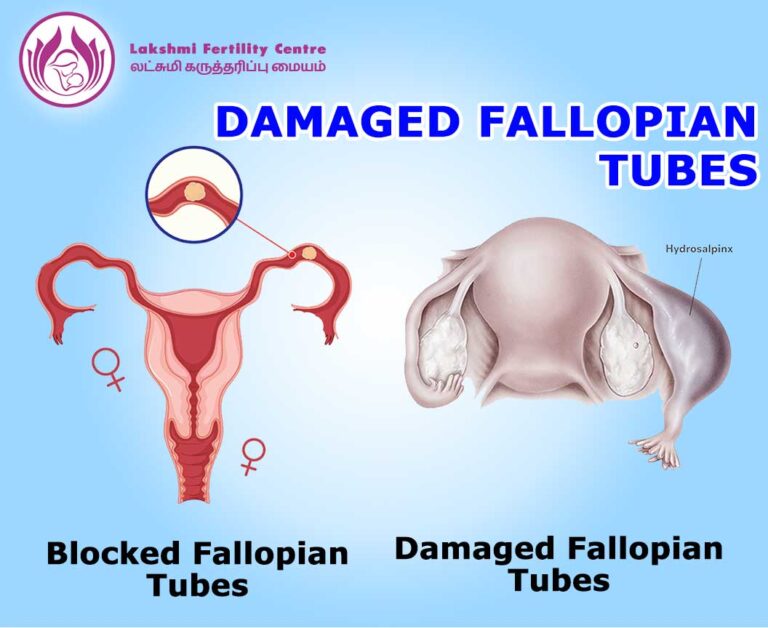DAMAGED FALLOPIAN TUBES:
If an egg is fertilized by sperm, it moves through the tube to the uterus for implantation. If a fallopian tube is blocked or damaged, women may have fertility problems. A blocked or damaged fallopian tube can prevent the sperm from reaching the egg or prevent the egg or fertilized egg (zygote) from moving from the ovary to the uterus to be implanted, because inside the fallopian tube is the location where sperm fertilizes the woman’s egg. Tubal blockages or damage may be caused by pelvic inflammatory disease, endometriosis, previous surgeries, ectopic pregnancy or tubal ligation. Conception also happens in the fallopian tube. Some of the common reasons for blocked fallopian tubes include scar tissue, infection, and pelvic adhesions.

SYMPTOMS OF DAMAGED FALLOPIAN TUBES:
Blocked fallopian tubes don’t often cause symptoms. Many women don’t know they have blocked tubes until they try to get pregnant and have trouble. In some cases, blocked fallopian tubes can lead to mild, regular pain on one side of the abdomen. This usually happens in a type of blockage called a hydrosalpinx. This is when fluid fills and enlarges a blocked fallopian tube. Conditions that can lead to a blocked fallopian tube can cause their own symptoms. For example, endometriosis often causes very painful and heavy periods and pelvic pain. It can increase your risk for blocked fallopian tubes.
MEDICATIONS:
If the fallopian tubes have become blocked or scarred, the doctor can use laparoscopic surgery to remove the blockage and open the tubes. This surgery can be used to break up the scar tissue in your fallopian tubes, making it easier for eggs to pass through them. The success of surgery will depend on the extent of the damage to the fallopian tubes. If your fallopian tubes are blocked by large amounts of scar tissue or adhesions, treatment to remove the blockages may not be possible. Tubal reanastomosis is a common treatment used to reverse a tubal ligation or to repair a part of the fallopian tube damaged by disease. The blocked or diseased part of the tube is removed and the two healthy ends of the tube are joined.
